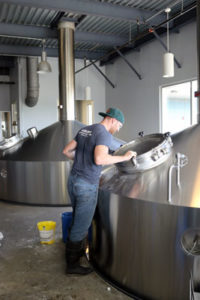Remember the days before the opiate epidemic, when the world was drug-free and no one had addiction problems? Of course not. Substance abuse has been ruining lives since humans first learned to distill alcohol, and it’s only gotten more widespread as we engineer more addictive chemicals. Our current prescription opiate epidemic is but the latest example of this devastating problem. But a new hope for recovery was ushered in by the Matrix Institute on Addiction in the 1980’s. During a time when cocaine served as America’s drug of choice, the team at Matrix observed unusually successful treatment outcomes for stimulant addiction. Recovering addicts were staying abstinent longer as a result of their unique therapeutic approach. This program, dubbed the Matrix Model, now forms a major cornerstone for rehab therapy today. So how does the Matrix Model work, exactly?
Your Personal Recovery Toolbox
The Matrix Model comprises several phases to prevent information overload. Using a combination of individual and group therapy, recovering addicts are slowly introduced to the facets of the disease of addiction by a Matrix-certified treatment counselor.
-
Stop the Cycle
Triggers and cravings are the main drivers of substance abuse. Counselor will teach group how to handle these events to preempt relapse.
-
Identifying External Triggers
Pinpoint the “people, places, and things” that trigger relapse. You’ll chart out and share your unique external triggers.
-
Identifying Internal Triggers
Not all relapse triggers come from the environment around you. They can also result from certain thoughts that you haven’t been well equipped to handle.
-
Introducing 12-Step or Mutual-Help Agreements
Structured recovery didn’t start with the Matrix Model. This section introduces the group to AA’s 12-Step modality. You’ll also learn about alternative support group resources.
-
Body Chemistry in Recovery
By now, you’re acutely aware of how unpleasant detox is. But did you know that the physical symptoms of recovery go beyond this initial phase? As the body adjusts to being free of substances, you’ll experience specific physiological symptoms of change.
-
Common Challenges in Early Recovery
Leading a clean and sober life requires a certain skillset. Healthy coping techniques address life on life’s terms without resorting to relapse.
-
Thinking, Feeling, and Doing
Thoughts, emotions, and behavior all intimately connect. The best way to control behavior is to get a handle on one’s thoughts and emotions first.
-
12-Step Wisdom
Although the Matrix Model is not the same thing as 12-Step, AA does offer good tools that help people stay sober. This step codifies and applies the most useful 12-Step sayings to each person’s individual circumstances.
Relapse Prevention
 Once recovering addicts achieve a deeper understanding of what drove their behaviors, they must learn tools to combat these behaviors going forward. The Matrix Model refers to this as relapse prevention. You’ll receive handouts that cover 32 topics including handling stress, managing downtime, resisting relapse justifications, and making new supportive friends. Addiction therapists must pass a certified training course that outlines how to teach these topics effectively in both group and individualized settings. Each topic handout includes prompts for recovering addicts to fill out. This helps to individualize recovery therapy within an effective therapeutic structure.
Once recovering addicts achieve a deeper understanding of what drove their behaviors, they must learn tools to combat these behaviors going forward. The Matrix Model refers to this as relapse prevention. You’ll receive handouts that cover 32 topics including handling stress, managing downtime, resisting relapse justifications, and making new supportive friends. Addiction therapists must pass a certified training course that outlines how to teach these topics effectively in both group and individualized settings. Each topic handout includes prompts for recovering addicts to fill out. This helps to individualize recovery therapy within an effective therapeutic structure.
By spending time reflecting on one’s own past addictive behaviors, it becomes possible to meaningfully engage within the fellowship. Each share contributes to the special bond of mutual understanding that knits the recovery community together. But it does even more than that.
Matrix Model Sets Long Term Stage
Most recovery programs suggest total lifelong abstinence to avoid triggering a downward spiral back to rock bottom. But life doesn’t end when treatment ends–so what do we do for the rest of our lives to avoid that spiral? The Matrix Model sets the long term stage for recovery by giving people the tools they need to avoid maladaptive coping.
The recovery community calls this “working a program.” It sounds like a big commitment at first. But when you consider the alternative (a life spent chasing that first high and/or a death by overdose), the value in creating a better quality of life outweighs the burden of such a long commitment. And considering humans are social by nature, the community aspect of fellowship leans into our natural inclinations to seek out people who understand and appreciate the complexities of our character. It provides a natural framework to work a program and keep addiction at bay one day at a time.
Psychoeducation & Looking Forward
The Matrix Model utilizes a combination of psychoeducation and forward planning to teach recovering addicts how to maintain abstinence long term. Given the success of rehab programs for people who are committed to recovery, this approach is recommended for anyone seeking professional help for a substance abuse problem.
New Start offers Matrix Model-based therapy for inpatient and outpatient settings. We also host a strong alumni community to support our clients for the long term. Our counselors are available 24/7 for free case assessments: 855-737-7363


